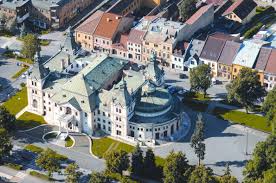After the fujara flute and Terchova music, the bagpipe has also been listed as UNESCO intangible heritage.
In fact, ‘Bagpipe culture’ was the exact name of another successful project of the Slovak Republic that was registered on the UNESCO list of intangible heritage.
The bagpipe tradition is visible throughout Slovakia with some regional differences. The very distinctive sound of this musical instrument made from metal, wood and leather can be heard at folk festivals between June and September all over Slovakia.
Events specifically dedicated to bagpipes include the Bagpipes Carnival, an international bagpipers’ and bagpipe music meeting in Malá Lehota, Žarnovica region, which started the last Friday before Ash Wednesday, or February 5th this year.
An international bagpipe festival, “Castle Walls Echo,” takes place at Slovenská ?up?a Castle at the end of August, which is an international festival of bagpipe music. Travelers to Slovakia can also enjoy the Gajdova?ka – International Bagpipe Festival connected with the international competition of young bagpipers at Oravská Polhora in September.
The Association of Slovak Bagpipers has approximately 40 places where the bagpipe tradition is alive and piping. The production, playing and singing with bagpipes is most popular in Bratislava, Northern Orava, Nitra and its surroundings, the area of Pohronský Inovec, Zvolen, Banská Bystrica, under Po?ana, Gemer, Malohonta, and Tekov.
In 1993 UNESCO included into historic Slovak landmarks Spišský Castle and its surroundings, Banská Štiavnica and Vlkolínec. In 2000 the historical Šariš town Bardejov was added, in 2008 the wooden churches of the Carpathian range, and in 2009 the Spiš town of Levo?a. –
Article Source: Slovakia.travel which was developed as part of the National Unified Tourism Information System of the Slovak Republic. This is an official central, online promotional and information system of the tourism in the Slovak Republic.



